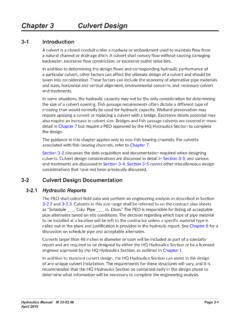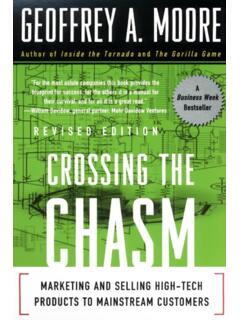Transcription of What Are Turning Points in History, and What Were They …
1 Chapter 2 what Are Turning Points in history , and what Were They for the Space Age?1 roger D. Launius Debates over Turning Points in history have sometimes become quite difficult and controversial among observers of the past. at sum they signify, represent, and define lasting changes in the climate of the times. the definition of Turning Points is exceptionally idiosyncratic, and their delineation also shifts over time as perspectives change and events become more distant. For most people who look back on the twentieth century, 1929 and 1941 demonstrated Turning Points as the nation changed in fundamental ways in response to the beginning of the great Depression and as the united States entered World War ii.
2 On the other hand, 1963 and 1987 were probably not Turning Points despite the Kennedy assassination and the stock market crash, respectively. therefore, to a very real extent Turning Points reflect the sea change that follows an event rather than the event , not all Turning Points need be marked by a dramatic event. For instance, no one event marked the shift from the conformist 1950s to the radical 1960s and 1970s, although many observers agree that these decades were indeed Turning Points . in the context of spaceflight, what are the Turning Points ? most would probably agree that the launch of Sputnik in 1957 represented a Turning point, although later in this essay i will make a case in opposition to this belief.
3 But what about the Kennedy decision to go to the moon, the moon landings themselves, the first flight of the Space Shuttle, the losses of Challenger and Columbia, and the rise of china as a player in human spaceflight? this list might be expanded indefinitely. this essay explores what constitutes a Turning point in history and examines some Turning Points in the history of the Space age. 1. the author thanks the following scholars for offering helpful suggestions about this essay: David c. arnold,William e. Burrows, erik conway, Jonathan coopersmith, Deborah g. Douglas, Donald c. elder, mark a. erickson, James rodger Fleming, amy Foster, anne collins goodyear, adam L. gruen, richard p. hallion, peter L.
4 Hays, J. D. hunley, Stephen B. Johnson, Katy Kudela, Laura Lovett, Dick myers, anna K. nelson, randy papadopolous, erik p. rau, philip Scranton, James Spiller, James , and David Ward. 20 SocietaL impact oF SpaceFLight Defining a Turning Point in a recent search of for the words Turning point in the titles of books, i found 1,134 relevant titles. these ranged from The Turning Point: Jefferson s Battle for the Presidency by Frank van der Linden to The Higher Freedom: A New Turning Point in Jewish history by David polish, to The Right Moment: Ronald Reagan s First Victory and the Decisive Turning Point in American Politics by matthew and the term is hardly new. hoffman nickerson used it in 1928 to describe the battle of Saratoga during the american postmodern scholars such as Fritjof capra have employed it as it appears in historical work of all types and varieties, schools and subjects, and grade levels and sophistication.
5 Indeed, the concept of a Turning point is ubiquitous in the literature of history . and not just in the written word professors, pundits, politicians, and plebeians all use it in all manner of settings and circumstances. many course offerings at the nation s colleges and universities include Turning point(s) in their titles. at a core level, a Turning point may be defined as an event or set of events that, had it not happened as it did, would have prompted a different course in history . Dictionaries define it as a point at which a significant change occurs. 5 the classic youngster s encyclopedia, World Book, defines it as a point at which a notable or decisive change takes place; critical point; crisis:the Battle of gettysburg was a Turning point in the civil War.
6 6 the use of the term comes up in the most interesting places. Encyclop dia Britannica incorporates 560 entries in which the term is used. not so unusual is the statement that the Battle of midway marked the Turning point of the military struggle between the united States and Japan in 1942, and the year 1206 was a Turning point in the history of the mongols and in world history : the moment when the mongols were first ready to move out beyond the steppe. 7 more obtuse are such interpretations as the death of antiochus in 129 Bc marking a Turning point in the history of the eastern mediterranean: greco 2. Frank van der Linden, The Turning Point: Jefferson s Battle for the Presidency (golden, co: Fulcrum publishers, 2000); David polish, The Higher Freedom:A New Turning Point in Jewish history (chicago: Quadrangle Books, 1965); matthew Dallek, The Right Moment: Ronald Reagan s First Victory and the Decisive Turning Point in American Politics (new York: Free press, 2000).
7 3. hoffman nickerson,the Turning Point of the Revolution; or, Burgoyne in America (new York: houghton mifflin, 1928). 4. Fritjof capra, The Turning Point: Science, Society, and the Rising Culture (new York: Simon and Schuster, 1982). 5. Turning point, merriam-Webster online Dictionary, (accessed 21 august 2006). 6. World Book encyclopedia and Learning Sources, (accessed 21 august 2006). 7. midway, Battle of, encyclop dia Britannica online, query= Turning %20point&ct=eb (accessed 21 august 2006); genghis Khan, encyclop dia Britannica online, (accessed 21 august 2006). 21 what are Turning Points in history , and what Were They for the Space Age? macedonian domination received a decisive blow; it would survive for only 46 more years.
8 8tying the demise of greek domination nearly two generations later to the death of antiochus seems tenuous at best. From a sociological perspective, a Turning point represents a lasting shift in the zeitgeist or spirit of the age. Several ingredients must be present. the shock to the system of civilization is profound and it may be measured in several ways. according to sociologist ted goertzel, one of the most reliable indicators is the response of the financiers. Financial markets are one of the quickest and most sensitive indicators of a country s mood, he noted. panic can move quickly after a shock .. and markets can spiral out of control. public opinion polls may also take the temperature of the society and its reaction to some major event,9 but those will work only for recent events where the data and structures that goertzel understands are available.
9 Clearly, there is no manner in which the mongol invasions of genghis Kahn, the death of antiochus, or even the Battle of midway can be assessed using financial data and public opinion polls. political scientists would employ analytical models such as Frank Baumgartner s and Bryan Jones s punctuated equilibrium analysis, which suggests that the policy process is comprised of long periods of stability that are then interrupted by predictable periods of instability which lead to major policy changes. Baumgartner and Jones describe a political system that displays considerable stability with regard to the manner in which it processes issues, but the stability is punctuated with periods of volatile change.
10 In times of stability the public is limited in its ability to effect change to the overall system, and most people are not even focused on making changes because they are relatively content with the current situation. only in times of unique crisis and instability do enough members of society rise up to undertake fundamental change, often from a perceived threat or dramatic a Turning point, therefore, results from a punctuation in the equilibrium of everyday life. this theory clinical and sterile as it might actually be has been applied to all manner of decisive events in history and is consistently reaffirmed in the discipline of political science. other social science disciplines approach the issue of marked change in different ways and with differing analytic tools, but all, it seems, recognize a Turning point in the stream of time as little more than an artificial construct that facilitates interpreting dramatic changes in society.






